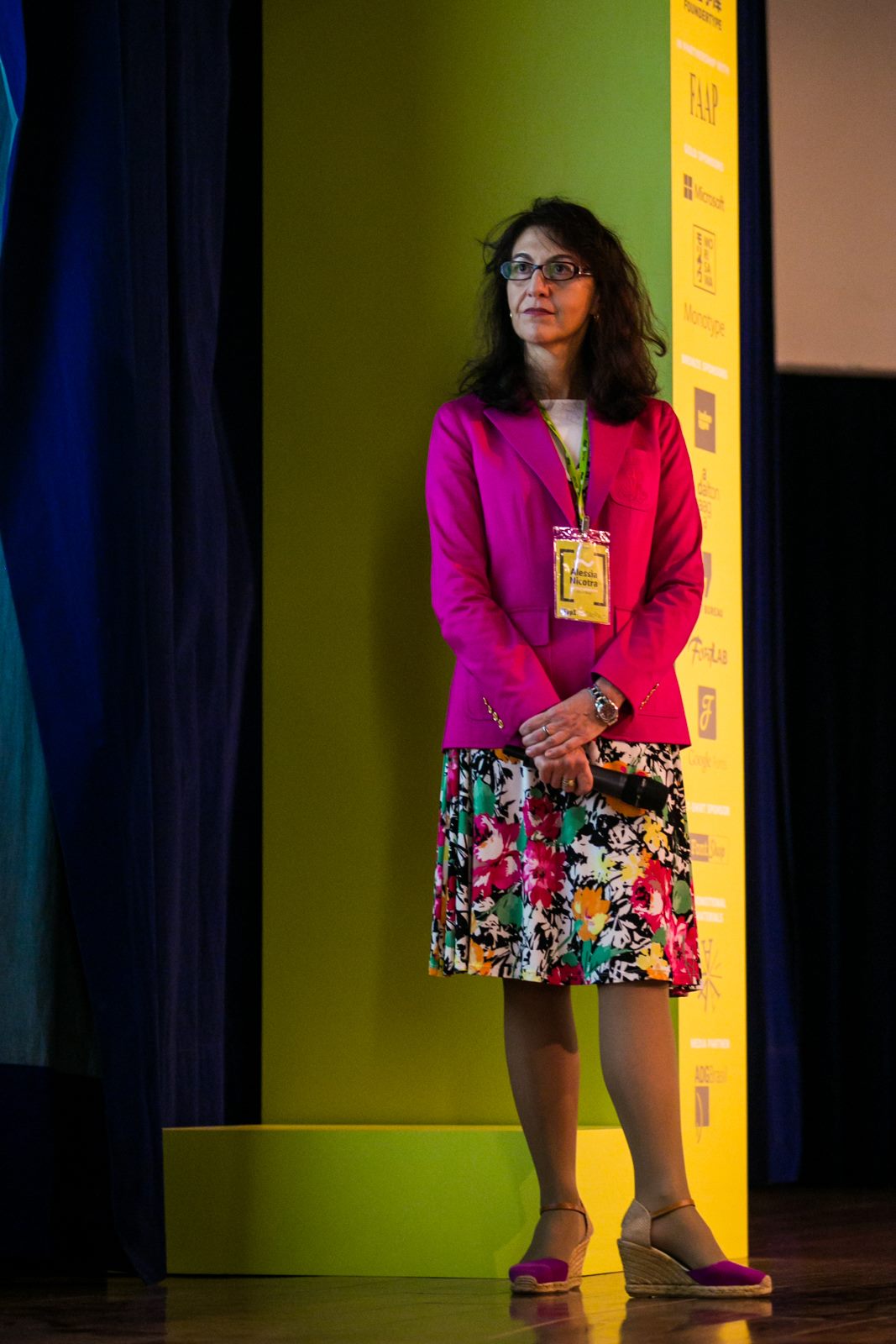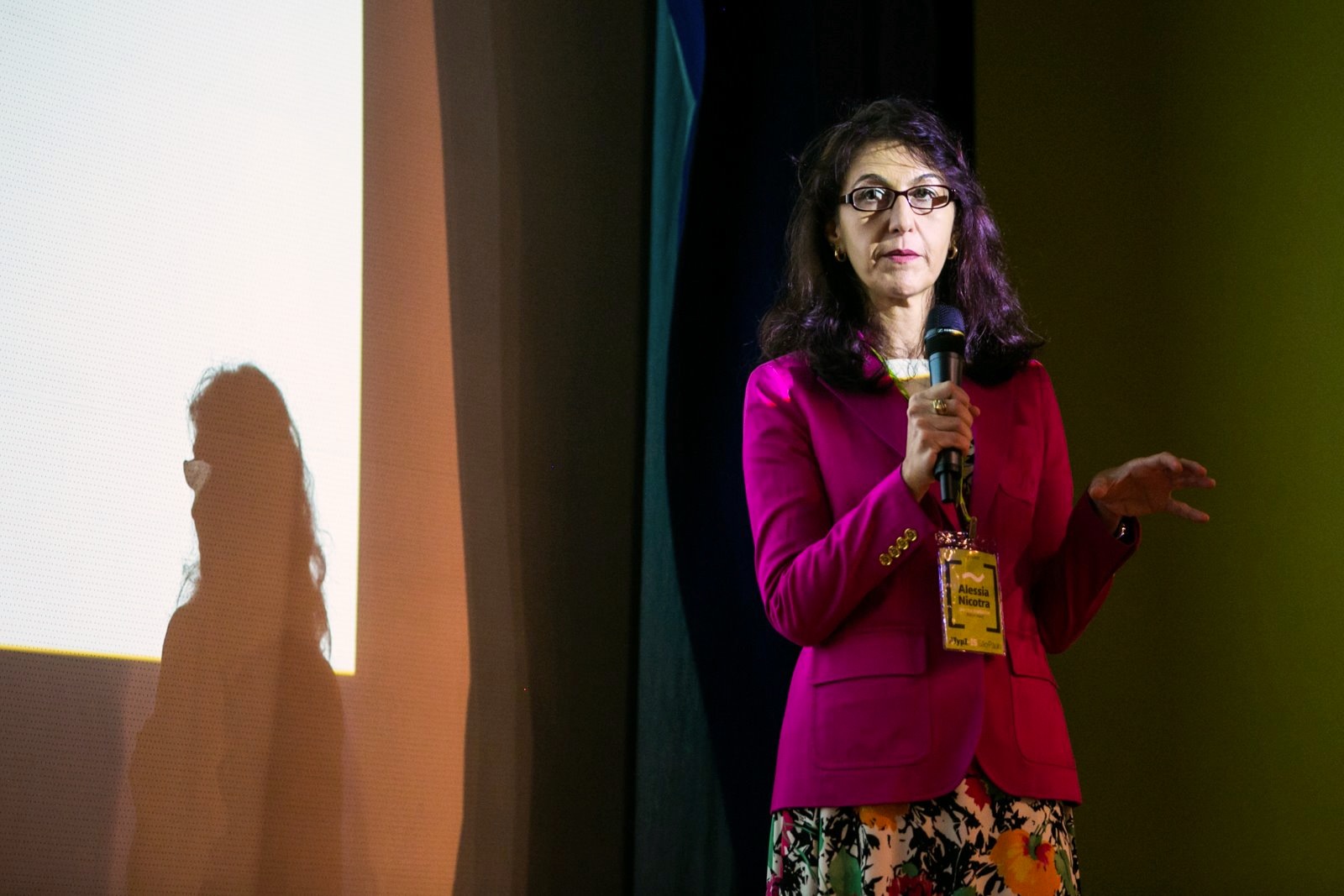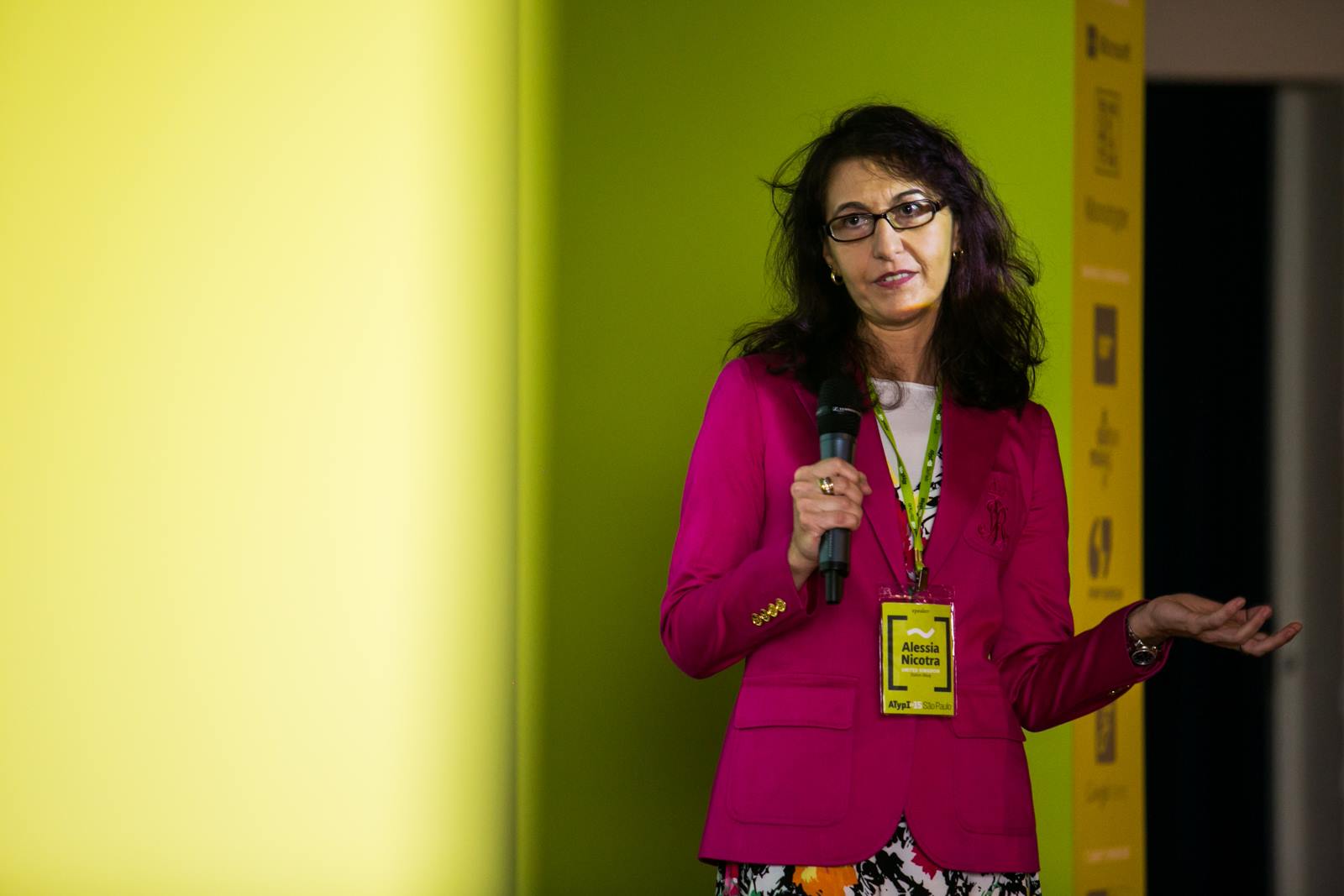TYPE DESIGN INFORMATION PAGE last updated on Wed Dec 17 04:26:19 EST 2025
FONT RECOGNITION VIA FONT MOOSE
|
|
|
|
Alessia Nicotra
Italian medical doctor with a PhD in neurology and neurophysiology. She currently works as a clinical neurophysiologist at Charing Cross Hospital in the UK and is also involved in academic research into the autonomic and peripheral nervous systems. Together with Bruno Maag she researches the physiological emotional impact of different type styles. At ATypI Sao Paulo 2015, her talk, together with Dalton Maag, is entitled Busting the Dyslexia Myth. As the master communicator of type design, Dalton Maag shows that nearly all dyslexia type research in the past was ignorant. Witness the abstract of the Nicotra / Maag talk at ATypI: There have been a number of fonts in recent years which claim to improve reading for people with dyslexia. Many of these designs have a handwritten quality, similar to Comic Sans. Often, the designers of these fonts claim to understand what is required to design a dyslexic font, simply by virtue of being dyslexic themselves. There may be some design merit to these fonts but the claim that they are favourable to dyslexics is misleading, and shows a complete lack of understanding what dyslexia is. The presentation will critique the designs that claim to be "the font for dyslexia", based on a scientific overview of dyslexia, and how dyslexia is dependent on language and other factors. It will also highlight the ignorance of design institutions that have awarded MAs and PhDs for fonts designed in the name of dyslexia. The talk was forceful, entertaining and convincing, based on an analysis of various pathways in the brain. For one thing, opaque languages (i.e., with a very tentative connection between what is written and spoken, as in English) have a higher population density of dyslexia. Italian and German are notr opque and thus fare better. Alessia also spoke at ATypI 2014 in Barcelona. Speaker at ATypI 2016 in Warsaw: Bruno Maag and Alessia Nicotra review a selection of studies published in regards to the emotional and functional qualities of typefaces since Poffenberger in 1927. The presentation investigates the methodologies employed and questions the results in the cultural and technological contexts of their time, and provide guidance as to their relevance today. |
EXTERNAL LINKS |
| | |

file name: A Typ I2015 Alessia Nicotra Photo by Luke Garcia Andre Hawk

file name: A Typ I2015 Alessia Nicotra Photo by Luke Garcia Andre Hawk

file name: A Typ I2015 Alessia Nicotra Photo by Luke Garcia Andre Hawk
| | |
|
Luc Devroye ⦿ School of Computer Science ⦿ McGill University Montreal, Canada H3A 2K6 ⦿ lucdevroye@gmail.com ⦿ https://luc.devroye.org ⦿ https://luc.devroye.org/fonts.html |
